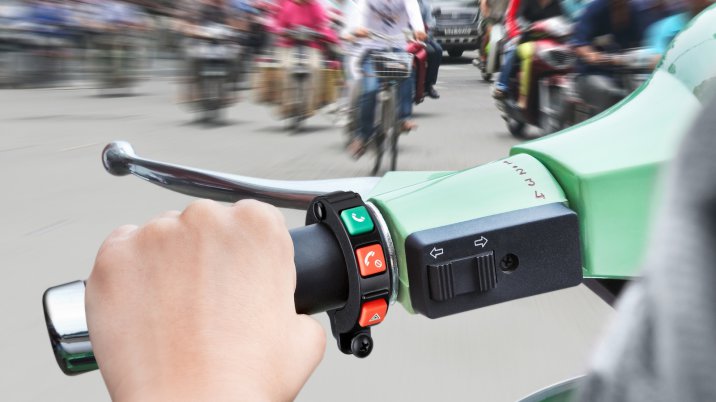
Bosch connected motorcycle technology: innovative or unnecessary?
By Jeremy Korzeniewski, Courtesy of Autoblog
Let the debate begin.
This week at CES in Las Vegas, international electronics and engineering company Bosch showed off a connectivity suite of technologies for motorcycles. It starts with the connectivity control unit, which links the motorcycle's onboard brain to the outside world, and finishes with the integrated connectivity cluster, which communicates with the rider via the bike's digital dashboard. In between is an interface called mySPIN that mirrors the user's smartphone – whether it runs iOS, Android, or Windows – and any other Bluetooth or wifi-enabled devices the rider wants to use.
In addition to mirroring applications like navigation and phone services, Bosch's connected motorcycle tech keeps track of performance metrics like lean angles and cornering speeds. Perhaps more important are the safety systems – eCall contacts emergency services in accident scenarios, bCall helps you get a broken bike repaired, and iCall connects the user with roadside assistance services. And, of course, Bosch is already a leading supplier of ABS, traction control, and stability control for motorcycles.

KTM will be the first manufacturer to use this connected motorcycle technology from Bosch, but some features will be headed to emerging markets, too. The image above shows dedicated buttons for phone use on what looks to be a Bajaj Vespa clone.
All of these two-wheeled technologies are impressive. But are they needed? Or, perhaps more appropriately, are they wanted? Two of Autoblog's motorcycle-riding staff members sat down for a debate on the merits of all this newfangled technology, and their thoughts have been distilled, point/counterpoint-style, below.
To Farkle or Not To Farkle
If you follow the adventure touring motorcycling segment, you've probably heard of the term "farkle." Basically, adventurists have found a need to add lots of bits, baubles, and gizmos to their two-wheeled mountain goats because manufacturers haven't yet offered them as factory options. Some of these add-ons are practical items, like additional lighting and luggage racks. Others are higher-tech, like navigation and on-bike video cameras.
Let's not pretend, though, that farkling is a completely new undertaking. Well before smartphones and navigation, I'd laminate directions and maps and tape them to the gas tank. I usually pulled over to consult my map – but not always – mostly because it's very distracting to look down at a piece of paper with a hundred little roads and names on it. It's not nearly as distracting to follow a line on an LCD screen that's directly in your line of sight.
I decided anti-lock brakes were a potential lifesaver on the road around the time that I locked up the front wheel after an inattentive minivan driver eased out into my path from a fast food drive-thru. I still love old, simple motorcycles. "Stone axe," as David Boldt puts it in his counterpoint below. But I recognize that modern bikes are safer and more reliable on a daily basis. And we have to remember that motorcycles aren't just an American thing – scooters and small-bore motorcycles are used all over the world as daily transportation, and those riders deserve to choose whether they want tech, too.
Will things like on-bike audio or simple turn-by-turn navigation systems make motorcycles less safe? No, I don't think so. And if you do, you're certainly free to ignore them. To farkle or not to farkle is no longer the question, it's the reality. But, like so many technologies that infiltrate into our daily routines, connected motorcycles like those pioneered by Bosch and KTM as defined above, still have an 'off' switch. And if all else fails, you're still free to ignore that phone call from your spouse while out riding.